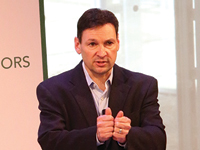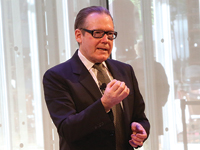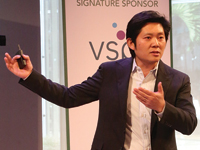 | |
“There are almost twice as many people in the world who have smartphones than there are people who have corrected vision,” said Paul Karpecki, OD, FAAO.
| |
| | |
 | |
“In a virtual store, I should be able to replicate what I can do in a physical store,” said futurist Michael Rogers.
| |
| | |
 | |
“We shrunk a 55-pound machine to the size of a deck of cards,” said Yaopeng Zhou, CEO of Smart Vision Labs, about his iPhone-based autorefractor.
| |
| | |